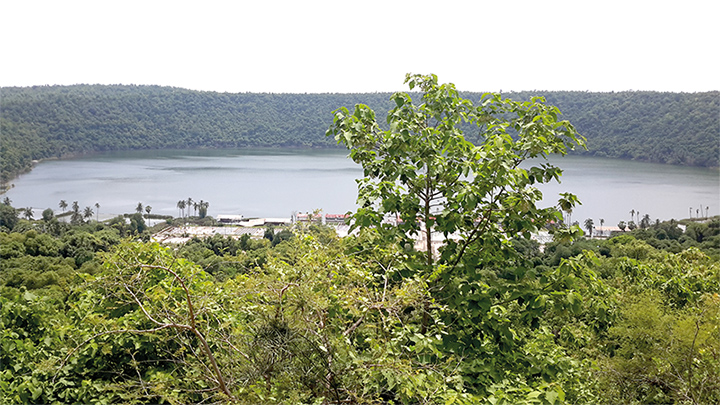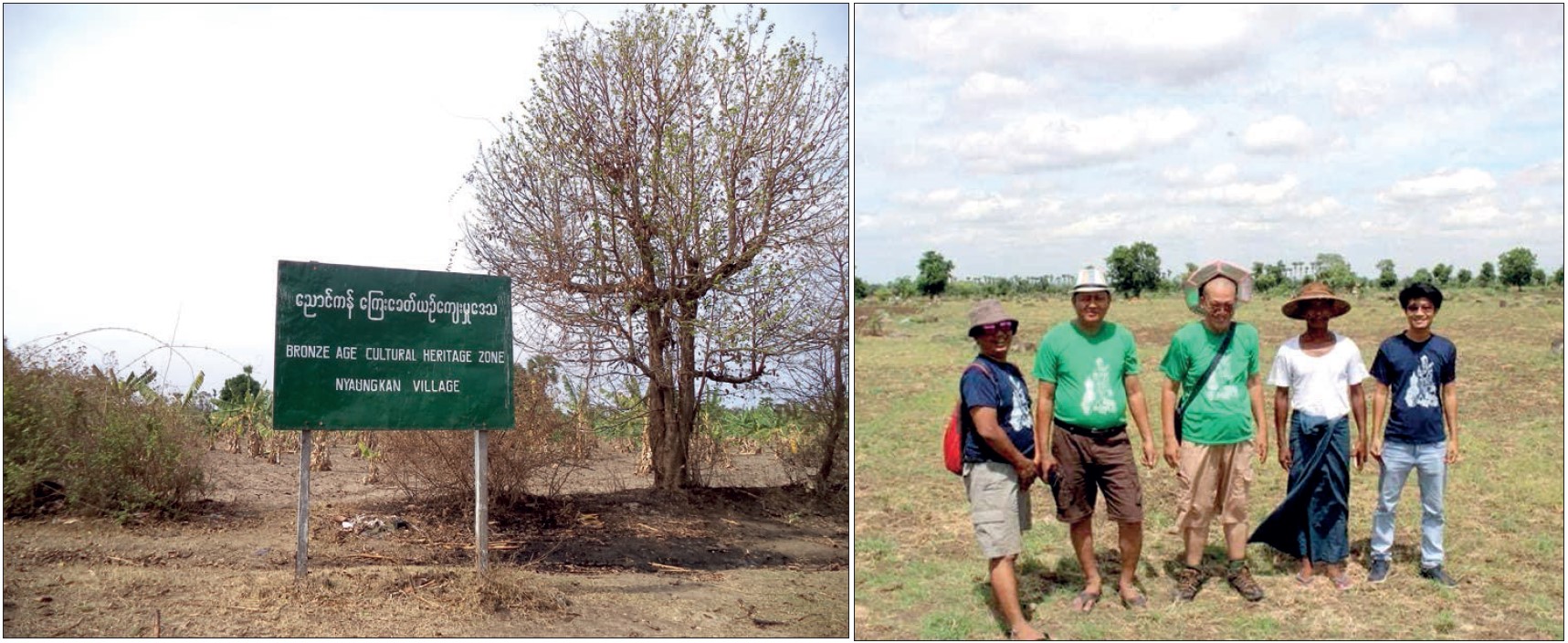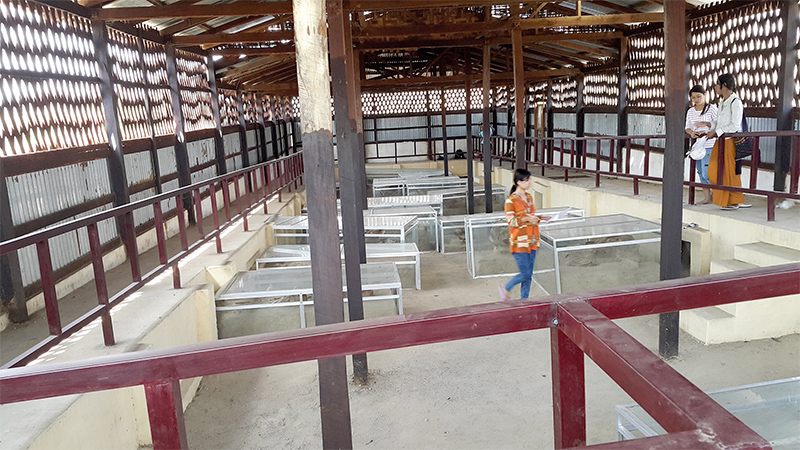By Maung Tha (Archaeology)
Budalin Township in Monywa District of Sagaing Region was famous in turning out wise members of the Sangha and prominent persons. Moreover, Budalin Township comprises locations of flourishing Bronze Age culture in Myanmar and Twintaung Hill producing spirulina blue-green algae.
Budalin
Based on the reliable data, Budalin at an altitude of 1,449 feet was formed on 414.8 square miles of land on 12 December 1972 and then constituted with three wards and 188 villages from 54 village-tracts having 414,974 population in March 2017.
Facts and figures released by the Ministry of Home Affairs showed the Bronze Age graveyard in Nyaungkan Village and the monument of Supreme Commander Maha Bandula in Ngapayin Village in Budalin Township.
Twintaung Hill
Twintaung Hill, three miles and two furlongs west of Budalin, is about 10 minutes walking from the left branch of the road from Monywa. Local people from Twin Village, two furlongs east of Twintaung Hill, engage in cultivation of crops and betel farms in addition to catching larva of the beetle as their livelihoods.
The old volcano, one mile in diameter at its mouth and 146 feet in depth, is in shape of frying pan. Spirulina is produced from the blue-green algae in the frying pan shaped lake.
Blue-green algae generally grow in old volcano in tropical region such as Myanmar, Mexico, Czech, Kenya, Ethiopia and China. Such an algae is produced at Twintaung Hill in Budalin Township, Taungpyauk and Twin-aung lakes in Kani Township and Yekha Lake in Sagaing Township.

Blue-green algae and larva of the beetle
A team led by Lecturer Dr Min Thein from Marine Science Department of Mawlamyine University conducted research on blue-green algae at Twintaung Hill in 1983. After that, a Spirulina Branch was set up at the Myanmar Pharmaceutical Factory under Ministry of Industry-1 on 11 January 1988.
Sales of provimin tablets started at domestic market in January 1989. No 3 Pharmaceutical Factory was established at Twintaung Hill on 6 June 2003 to produce the tablets meeting international standards for export purpose to Asian and European markets.
Above PH 8.5 of water in Twintaung is inappropriate for living beings except larva of the beetle. Only blue-green algae for producing spirulina can thrive well in that water.
Blue-green algae can be cultured at Twintaung water in the brick tanks. As the water outside Twintaung flew into the lake, not only production rate of the algae but larva declined.
Female larva lay eggs on the stones shore of the lake and then larva come out. By posting oil lights at the shore at night, local people catch larva by sieve. But, the catchers release large larva for prevention of depletion.
However, some catchers do not release large larva to get good price in the market. Consequently, number of larva declined. Fortunately, larva of the beetle can be caught at Twinma and Taungpyauk lakes in Kani Township.
Nyaungkan Graveyard in Bronze Age of Myanmar
Nyaungkan and Okaing villages, assumed as area of flourishing Bronze Age culture in history of Myanmar, are located in Budalin Township. Nyaungkan Village was more famous due to finding of evidences related to the Bronze Age by the Department of Archaeology at its old graveyard. Nyaungkan Village is five miles from northwest of Budalin and on the east bank of Chindwin River.
The site where Bronze Age culture flourished is one mile southeast of Nyaungkan Village, at an altitude of 500 feet. The excavated graveyard is 250 feet long from the north to the south and 130 feet wide from the east to the west.
It was assumed that the site might be a graveyard. Later, the site was owned by U Chit Hlaing from Ywatha Village, who found human skeletons, earthen pots and bronze weapons in land preparations for cultivation. That was why the ancient cultural evidence observation team, comprising scholars and experts from the office of the military strategic studies under the Ministry of Defence, Archaeology Department and Anthropology Department of Yangon University and Archaeology Department under the Ministry of Culture, systematically conducted excavation tasks from January 1998 to March 1999. As the team systematically excavated the plots three times, the scholars and experts found evidences of the Bronze Age of Myanmar.
Currently, five site museums have been built on the plots where the Ministry of Culture excavated to preserve the evidences observed by researchers and university students. The unearthed fossils and pots are covered with 52 aluminium glass chambers in the museums.
The ancient objects discovered from Nyaungkan were earthen pipes, stone rings, locks of stone rings, bronze axes, earthen beads in various sizes and types, three stone balls, five bronze spears, six bronze arrow heads, bronze wares, 23 pieces of broken pot with designs, eight rolls of lead sheets, stone weapons, pots, five pieces of bricks, three earthen oil lamps and five pieces of broken urns with designs. The Myanma Alinn and the Kyemon dailies issued on 23 March 1998 mentioned the news that these objects were handed over to the Ministry of Culture on 22 March 1998 so as to showcase them at the National Museum.

Tradition of bury in Bronze Age
Most of the human dead bodies which remained fossils were buried leading to the north but two remains were buried leading to the south. Most of the fossils were supine, and they were from three feet to five feet and eight inches in length.
One skull and one arm bone kept in a large pot, various sizes of pots and pots for animal bones were seen in the plot SE 15. Experts assumed that skeletons were found due to burying humans and animals for the first time, and then, the second bury was undertaken on it. Skulls of cow and dog, and a hoof of animal were found together with human fossils at the excavation site SE 5.
Fossils of a man, a woman and a child were buried at a single site. Various sizes of pots and one bronze arrow head were found together with these fossils. Two fossils were also found in the excavation site SE 2. Experts remarked that such bury might be undertaken due to their deaths at the same time but it may be a tradition that remains of families might be buried at the same place when they died.
As some fossils were found holding bronze weapons, they might be buried together with their objects when they passed away. Various sizes of earthen beads, stone beads and conch shell beads were found at necks of fossils and around the wrists, so these ornaments might be worn by those of fossils before they were dead.
Various sizes and types of stone rings were found at necks and wrists of some fossils. Stone wings might be worn before the death as well as the dead bodies might be decorated with them in line with their ranks.
In the Bronze Age, human bodies were buried together with oil lamps, earthen dishes and pots with holes of strings. It was a significant fact that small pots were put in large pots in a burial tradition.
Experts generally accepted that early humans residing in Myanmar reached the Bronze Age when they used bronze objects and weapons after passing through Palaeolithic, Mesolithic and Neolithic ages.
Experts could expose a part of culture in the Bronze Age of Myanmar. Although these bronze objects cannot be exposed for relative dating through carbon 14 dating and thermo luminescence dating techniques, experts estimated that the Myanmar Bronze Age lasted past 3,000 years ago between BC 900 and BC 600. Historian U Sein Myint noted that Nyaungkan Bronze Age area might flourish in later Bronze Age.
Budalin has been famous as the native of venerable Buddhist monk U Budh, paid homage by King Sagaing and First Queen Nanmadaw Mei Nu , and as the site of flourishing Bronze Age culture. In doing research on bronze and iron ages of Myanmar, Budalin Township becomes one of the sites to expose ancient history. (Translated by Than Tun Aung)
Reference:
Paper on findings of ancient cultural evidence observation team, Budalin Township (Archaeology Department of Yangon University)
Bronze Age and Iron Age history in metal age of Myanmar (U Sein Myint)
Proceeding of the Workshop on Bronze Age Culture in Myanmar (UHRC)



